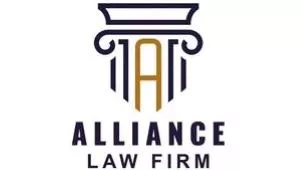1. Introduction
The petroleum industry plays a crucial role in global energy production, economic development, and societal progress. However, the extraction, processing, and distribution of petroleum resources can have significant environmental impacts. Therefore, environmental regulations are essential to mitigating and managing these impacts, balancing energy needs with environmental sustainability. Environmental regulations in the petroleum industry aim to conserve natural resources and minimize pollution. This is done by formulating guidelines for the responsible extraction and utilization of petroleum reserves which helps to prevent overexploitation and the depletion of valuable resources.
Midstream petroleum operation is the second stage of the petroleum market, it involves transporting crude or refined petroleum products through pipelines, trucks, oil tankers, or rail and storing petroleum products. 2 The downstream operation is the final stage of the petroleum market and involves refining, processing, and purifying crude oil and natural gas. This sector involves efforts made to market and distribute crude oil and natural gas-related products, including petrol, gasoline, diesel oil, jet fuel, lubricants, heating oil, asphalt, waxes, and a plethora of different petrochemicals. The Nigerian Midstream and Downstream Petroleum Regulatory Authority (NMDPRA or the Authority) is empowered to make regulations for health and environmental measures, provide environmental standards, outline the duties of licensees, and provide sanctions and administrative penalties for non-compliance. 3 This article discusses the importance of environmental regulation in the petroleum industry and outlines the key components and implementation of the Midstream and Downstream Petroleum Environmental Regulation, 2023.
2. The Importance of Environmental Regulations in the Petroleum Industry
Midstream and downstream petroleum are segments of the oil and gas industry that require adequate infrastructure to maintain environmental standards. Petroleum disasters are highly visible in the midstream and downstream petroleum operations, almost as much as they are in the upstream sector. Consequently, strict environmental regulations are essential to prevent disasters, reduce pollution, and address climate change. These regulations enforce operational standards, monitor compliance, and ensure remediation and compensation in case of environmental damage, promoting sustainable industry practices. Their implementation is crucial for the industry to operate responsibly and protect the environment for future generations.
3. The Midstream and Downstream Petroleum Environmental Regulations 2023
NMDPRA issued the Regulation to control environmental measures, set environmental standards, and penalize noncompliance. 4 This regulation creates a system for petroleum operators (licensees or permit holders) to follow including plans, assessments, reports, or studies done by accredited persons following the guidelines of the NMDPRA.
4. Key Components of the Regulation
- Environmental Management System (EMS): All petroleum operations must have an environmental management system that must be able to handle the environment of the operation. To ensure the system is in control of environmental practices, an audit is carried out regularly that evaluates the EMS and regulatory compliance. 5 The licensee must assess and document the management's performance concerning environmental factors. An EMS is the environmental foundation for renewing a license. 6
- Environmental Studies and Assessment: This
assessment is conducted to evaluate the impact of activities before
a new project, while operating on an existing facility, after an
oil spillage incident, or for special activities in the midstream
and downstream petroleum operations. A licensee/ permit holder is
required to conduct the following studies and assessments.
- Project concept screening (PCS) study: This process is carried out before the adoption of any project concept or option. Each concept or option is subjected to an environmental screening process, the result of which will impact the selection of that concept or option.
- Preliminary Environmental Risk Assessment (PERA) study: This is carried out on the selected project concept or option to assess for potential significant and adverse environmental effects.
- Environmental Evaluation Study (EES): An ESS is conducted for the following reasons and circumstances: as part of compliance measures, every five years after the commencement of the facility's activities; in situations where there is insufficient environmental data and the Authority deems it essential due to the operations' effects on the environment; before a facility is abandoned and decommissioned; decommissioning and abandonment process explicitly requires the completion and approval of an EES. Finally, all functional chapters on EMP with suitable implementation schedules must be included in all EES reports.
- Post Impact Assessment (PIA) Study — This study is conducted as follows: after spillage from petroleum liquids or hazardous materials, an explosion or other incidents occur; and within five weeks of the incident being cleaned up.
- Environmental Management Plan (EMP): A licensee/permit holder is required to submit an environmental management plan to the Authority for approval for the following activities: onshore and offshore petroleum liquids and gas transportation pipelines and systems; petroleum liquids and gas separation, processing, liquefaction, compression, handling, and storage facilities, such as gas-to-liquid (GTL) and floating storage and offloading (FSO) vessels; refineries, petrochemicals. Further activities include gas-based fertilizer, and other gas derivative plants; product depots for the storage of petroleum liquids, gas, and lube blending plants; and retail outlets of combined storage capacity equal to or greater than 270,000 liters for refined products. Petroleum waste management facilities for the collection, treatment, or disposal of wastes generated from the midstream and downstream petroleum sectors; and any midstream and downstream petroleum operations that are determined by the Authority as sensitive because of the location or the activities.
The following documents must accompany the EMP:
- A summary of the environmental impact assessment (EIA) report from which the plan was derived.
- A report on public consultations between the licensee or permit holder and stakeholders on the EIA of the project to which the EMP relates, and the report should contain the following information: evidence of public consultation, such as a list of attendees and newspaper publications. The report should further contain the venue of the consultation, where applicable; level of stakeholder engagement; mode of consultation; period and method of notice given; information on environmental impacts and risks disclosed at the consultation; comments received from stakeholders during consultation and consideration given to the comments and any other information or document required by the authority for the review of the EMP.
An EMP is approved within ninety (90) days of submission or thirty (30) days for a re-submitted EMP from the date of resubmission8 . If the authority fails to communicate a response within the appropriate time, an EMP or re-submitted EMP is considered approved9 . An authorized EMP is the environmental foundation for project execution.
If an approved EMP is rejected, the licensee can resubmit an updated EMP for review and approval. An EMP is approved according to the financial commitment to the Environmental Remediation Fund (ERF). Before approval or rejection, the authority may request an amendment or resubmission of the approved EMP to satisfy the requirements. A licensee/permit holder with an approved EMP must apply for permission to update the EMP. This application should justify the approved EMP alteration or a proposed modification to the licensee's petroleum operations.
An application for revision is submitted before starting a new petroleum activity, making any important changes, or adding new stages to ongoing petroleum operations absent in the EMP. 10 Therefore, any major new environmental impact or a considerable increase in an existing environmental impact that was not included in the EMP for petroleum operations must be included in the application for revision. This includes several new environmental impacts or increases in present environmental impacts that when assessed collectively, are new impacts or rises in present impacts not addressed by the EMP for petroleum operations.
Footnotes
1. Mr Uche Val Obi SAN, Lilian Adat, Anastasia Edward and Ahmed D Sani are the Managing Partner, Executive Associate and Associate of Alliance Law Firm respectively.
2. Petrochemical Chemical Energy, “Upstream, Midstream and Downstream – Understanding the Three Petroleum Markets” < https://www.petro-online.com/news/fuel-for-thought/13/breaking-news/upstream-midstream-anddownstream-ndash-understanding-the-three-petroleum-markets/32165 > assessed 31 January 2024.
3. Petroleum industry Act 2021, s 32.
4. Midstream and Downstream Environmental Remediation Fund Regulation 2023.
5. Midstream and Downstream Petroleum Environmental (MDPE) Regulation 2023, R. 1 (5).
6. MDPE Regulation 2023, R. 1(7). 7 MDPE Regulation 2023, R. 11.
8. MDPE Regulation 2023, R. 15 (a)-(b).
9. MDPE Regulation 2023, R. 15 (3).
10. MDPE Regulation 2023, R.16 (2).
To view the full article, click here.
The content of this article is intended to provide a general guide to the subject matter. Specialist advice should be sought about your specific circumstances.




